I have 11 paintings ready to deliver to the Silver City Store for the season, which begins on Memorial Day weekend. (I think this is the correct way to designate the last weekend in May.)
Having just finished the commissioned oil painting, I could have just quit painting for a week or two. My art business is usually feast or famine, and when there are no impending deadlines, that is the time to plan and work ahead.
Here are the steps to firing up the Mineral King Painting Machine:
- Grab a random assortment of canvases off my shelves, nothing larger than 6×18 or 10×10.
- Cover them in a layer of paint, any paint, whatever is left on the palette
- Pull out my prechosen photos. I have to choose the right photos ahead of time, being careful to keep scenes that I painted in recent years separated. Although I paint the same scenes over and over (Mineral King doesn’t have that many different options), the goal is to change the shapes, the times of day, and the angles from which I photographed the popular scenes.
- I pull out the list of sizes and subjects that I have already painted for this year, and then choose new photos of the ones most likely to sell first.
- The photos get paired with the canvases, making sure that the sizes and shapes are different from the ones already finished for the year.
- Each canvas gets a title, inventory number and hanging hardware.
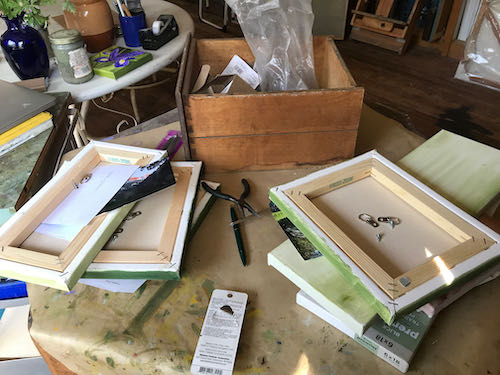 7. I usually begin with skies; it is most efficient to do all the same color in one session.
7. I usually begin with skies; it is most efficient to do all the same color in one session.
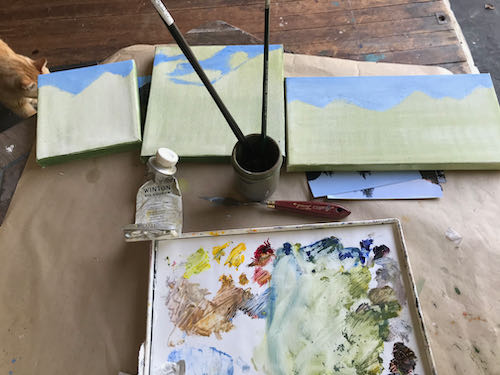
8. Next, I either block in the main shapes or I draw them in with a small paintbrush. None of this is how I was taught in any of the various classes and workshops. It just happens to be the most efficient way that I have developed.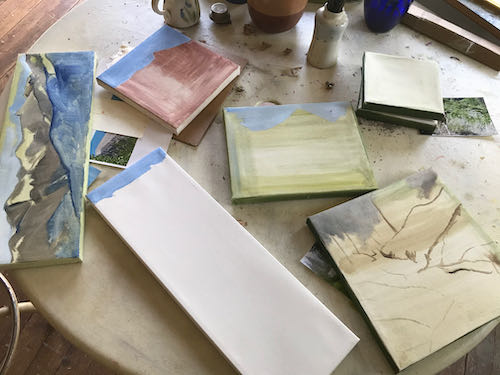
9. When I have finished about half of the canvases, I begin getting tired and sloppy. So I just slap on approximate colors in the basic shapes, knowing that the next time I paint, the guidelines are in place, the proportions are correct, and there is enough paint down that the canvas won’t show through.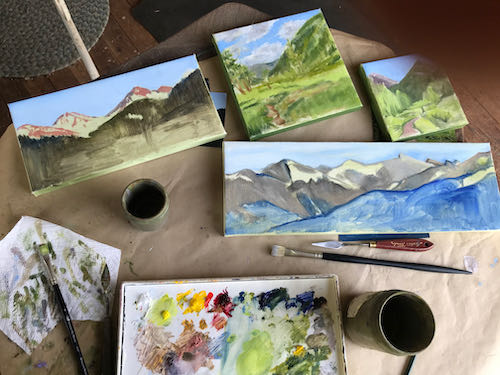
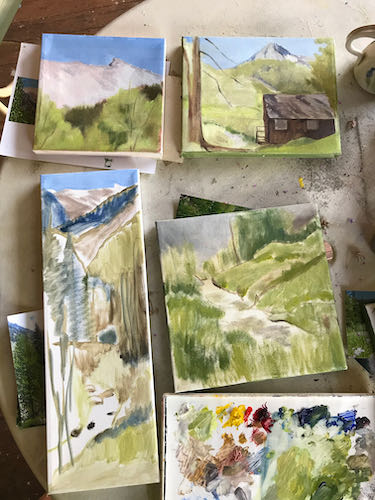
I had ten canvases out, primed, and wired, then only worked on eight. I wasn’t sure that the last 2 photos were appropriate for the 6×6″ canvases—too many details on too small of a canvas means too much effort for too little money. My prices are competitive with other local artists, but when Silver City takes its hard-earned bite, my “wages” drop considerably. Thus, it behooves me to be efficient with my time.
Does this post affect you the same way that watching sausage get made might affect you? Make you not want to eat sausage anymore, or make you not want to buy paintings?
I hope not!
2 Comments
I find your painting process fascinating! Some day I’ll do the same with crochet projects. But that last photo–I recognize all the scenes except on the painting in the lower right corner. . . .
In the meantime, I don’t want to know how sausage is made, thankyouverymuch.
Bottom right is Franklin Creek, 2nd crossing, above the Franklin/Farewell junction.
Comments are closed for this article!